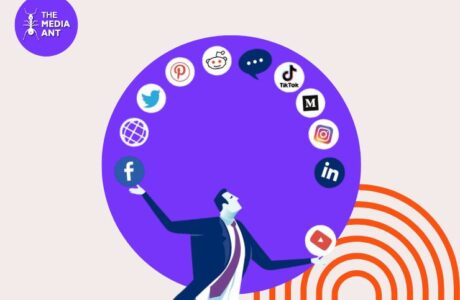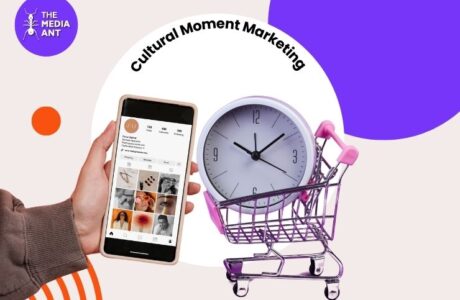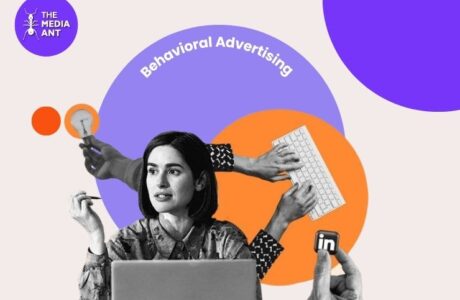What Is Sequential Messaging?
Sequential messaging refers to a strategic approach in digital advertising where ads are delivered to users in a planned sequence, each message building on the previous one. This method guides users through their journey, from initial awareness, through consideration, and ultimately toward conversion. By delivering progressively more targeted messages, sequential messaging keeps users engaged at each stage, improving brand recall and boosting the chances of conversion.
A good example is Coca-Cola’s “Share a Coke” campaign. The company started by creating awareness with personalized bottle names, followed by social media engagement and video content that encouraged sharing. The campaign concluded with discounts, driving purchases. This strategic use of sequential messaging resulted in a 7% increase in consumption among millennials in the U.S., showing how sequential messaging can effectively increase engagement and foster consumer loyalty.
Why Sequential Messaging Matters in 2025
1. Increased Consumer Expectations for Personalization
Consumers today expect personalized experiences at every touchpoint. By 2025, delivering personalized messaging will be an essential component of advertising. Sequential messaging allows brands to meet these growing expectations by delivering the right message at the right time, effectively guiding users through their journey. According to Salesforce, 76% of consumers expect companies to understand their needs and deliver tailored experiences, making personalized advertising crucial for ongoing engagement and conversion.
2. Improved Ad Performance and ROI
With advertising costs on the rise, maximizing ROI is more important than ever. Sequential messaging enhances ad performance by ensuring each ad is highly relevant to the user’s current stage in their buying journey. Whether it’s raising awareness, building interest, or prompting action, each ad delivers a message tailored to the moment. Forrester found that sequential retargeting ads saw a 72% increase in conversion rates compared to traditional display ads, proving that staged, personalized messaging significantly improves ROI.
3. Reducing Ad Fatigue
Today’s consumers are bombarded with ads daily, which can lead to ad fatigue. Sequential messaging alleviates this issue by offering varied, relevant content over time, rather than repeating the same message. This keeps users engaged, reducing the likelihood of them tuning out. Google reports that sequential messaging results in a 33% higher CTR compared to single-message ads, showcasing its ability to keep interest high and combat ad fatigue.
4. Maximizing Data Utilization
With the vast amounts of data available, brands now have the opportunity to serve highly targeted ads based on consumer behavior. Sequential messaging leverages this data by delivering personalized ads that align with user preferences and past actions. Amazon’s recommendation engine is a prime example, where user data such as browsing history and past purchases is used to suggest complementary products, leading to a 29% increase in sales from personalized recommendations.
5. Cross-Platform Synergy
Consumers today engage with brands across multiple platforms, from social media to search engines to websites. Sequential messaging ensures a cohesive experience across these touchpoints, guiding the user through their journey, no matter where they are. For example, a user may first see an introductory ad on Instagram, followed by a detailed YouTube video, and finally, an email with a discount code. Google found that 60% of consumers start researching a product on one device but complete their purchase on another, underscoring the need for a cross-platform approach.
6. Adapting to Shorter Attention Spans
As attention spans decrease, it’s crucial to deliver concise and engaging messages. Sequential messaging allows brands to break their message down into manageable, bite-sized chunks that maintain interest and increase the chances of conversion. TikTok’s success with short-form content proves the effectiveness of delivering brief, impactful messages. Similarly, sequential messaging can deliver quick, relevant content that keeps users engaged at every step of the journey.
7. Better Lead Nurturing
Sequential messaging is especially beneficial for lead nurturing in industries with longer sales cycles, such as B2B. By delivering timely, relevant content at each stage—whether educational materials, case studies, or product demos—brands can build trust and guide leads toward conversion. HubSpot has seen a 50% increase in sales-ready leads with its use of lead nurturing emails, a form of sequential messaging.
How Sequential Messaging Improves Ad Campaigns
1. Building Stronger Brand Recall and Emotional Connection
Sequential messaging helps reinforce brand recall by ensuring users receive consistent, relevant content that aligns with their interests and needs at each stage of their journey. This consistency fosters deeper emotional connections with the brand, making users more likely to convert. Coca-Cola’s campaign exemplified this by initially creating an emotional bond through personalized bottle names, followed by social media engagement and discounts to drive sales, resulting in a 7% increase in millennial consumption.
2. Nurturing Leads Through the Funnel
The main strength of sequential messaging is its ability to nurture leads through the sales funnel. By delivering tailored content based on the user’s stage in the decision-making process, brands can ensure that each interaction is meaningful. Whether providing awareness-building content, offering product comparisons, or presenting promotional offers, sequential messaging helps move users from consideration to action. Salesforce’s use of sequential messaging has resulted in a 30% increase in lead conversion rates, underscoring the effectiveness of this strategy.
3. Boosting CTR, Engagement, and ROI
Because sequential messaging is personalized, it leads to better engagement and higher click-through rates (CTR). By delivering content that resonates with users, brands can ensure that their ads are perceived as useful, making users more likely to engage. Higher engagement, in turn, drives better ROI, as ads are more likely to lead to a conversion. Spotify’s sequential messaging approach, offering personalized playlists and ads, has led to a 25% increase in user engagement, demonstrating the power of tailored content.
Best Use Cases for Sequential Messaging
1. E-commerce Product Launches
Sequential messaging is ideal for product launches in e-commerce. Start with awareness ads to introduce the product, follow up with consideration ads highlighting features or customer testimonials, and end with action-driven ads offering discounts or promotions to encourage purchases. Amazon Prime Day is a great example where sequential messaging is used to raise awareness of deals, followed by retargeting ads with personalized discounts, resulting in higher sales volume.
2. B2B Lead Nurturing Campaigns
For B2B companies with longer sales cycles, sequential messaging helps nurture leads effectively. By providing valuable content at each stage—whether through webinars, demos, or free trials—brands can build trust and guide leads toward conversion. HubSpot’s sequential messaging strategy has resulted in a 50% increase in sales-ready leads, making it an effective approach for B2B campaigns.
3. Remarketing for Abandoned Carts
Sequential messaging is a powerful tool for remarketing, particularly for abandoned carts. After a user leaves items in their cart, brands can send a series of ads reminding them of the products. These ads can offer incentives such as discounts or time-sensitive offers to encourage users to complete their purchase. ASOS uses this strategy to great effect, with sequential remarketing campaigns leading to a 20% higher conversion rate compared to traditional remarketing.
4. Cross-Platform Storytelling (Meta, Google, YouTube, etc.)
Sequential messaging allows brands to tell a cohesive story across multiple platforms. A user might first see an awareness ad on Facebook, then a more detailed video on YouTube, and finally receive an email offering a discount to convert. This multi-channel strategy ensures the user receives consistent messaging across touchpoints, increasing the chances of conversion.
How to Set Up Sequential Messaging in Digital Campaigns?
1. Audience Segmentation Tips
Effective audience segmentation is crucial for sequential messaging. By grouping users based on behavior, demographics, or engagement levels, brands can ensure that each message is personalized and relevant. For example, users who have previously engaged with a product page but haven’t made a purchase should receive different messaging than first-time visitors, making each ad feel more personal.
2. Message Sequencing: Awareness → Consideration → Action
Successful sequential messaging follows the buyer’s journey. First, awareness ads introduce the brand; then, consideration ads provide more in-depth information about the product or service; finally, action ads offer incentives or calls to action that encourage conversion.
3. Channel Strategy: Display, Social, Video, etc.
Each platform serves different purposes at various stages in the funnel. For example, display ads are effective for raising awareness, while social media ads work well for fostering consideration. Video ads drive deeper engagement, and email can be used to drive conversion. A multi-channel strategy ensures that the message reaches users at every touchpoint, guiding them toward conversion.
4. Tools & Platforms That Support Sequential Ads (Meta, DV360, etc.)
To implement sequential messaging, brands can use platforms like Meta Ads Manager, Google Display & Video 360 (DV360), LinkedIn Campaign Manager, and YouTube Ads. These platforms offer powerful tools to create, manage, and optimize sequential ad campaigns across multiple digital channels.
Conclusion
Sequential messaging is a powerful strategy for delivering personalized, relevant, and engaging ads that guide users through the entire funnel, from awareness to conversion. By using tailored messages at each stage, brands can improve user engagement, boost click-through rates, and maximize ROI. In 2025, with increasing consumer expectations for personalized experiences, sequential messaging will be crucial for brands looking to remain competitive. By understanding the customer journey and using the right tools and strategies, brands can build lasting relationships with their audiences and drive long-term success.
FAQs
What platforms support sequential messaging?
Platforms like Meta (Facebook/Instagram), Google Ads, YouTube, DV360, and LinkedIn support sequential messaging, enabling multi-stage, targeted ad campaigns.
Is sequential messaging only for large brands?
No, sequential messaging is effective for businesses of all sizes. Even small businesses can use sequential messaging to nurture leads and increase conversions.
How long should the delay be between messages?
The timing between messages should strike a balance, keeping the user engaged without overwhelming them. Delays of 24-48 hours are typically optimal, depending on the stage of the funnel.
Can sequential messaging work with remarketing?
Yes, sequential messaging is highly effective for remarketing. It helps guide users back to complete actions such as purchases or sign-ups by offering timely, personalized incentives.





